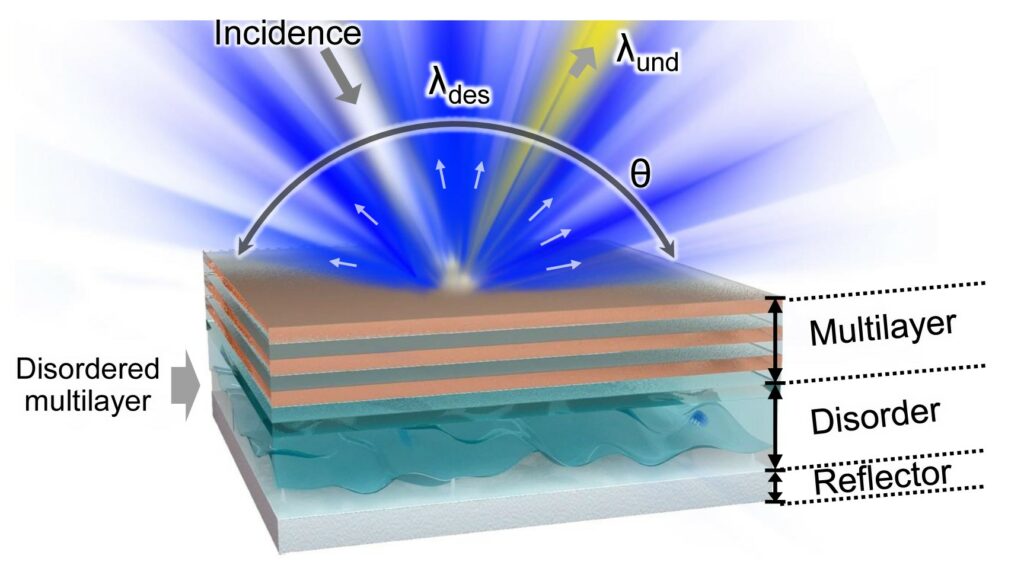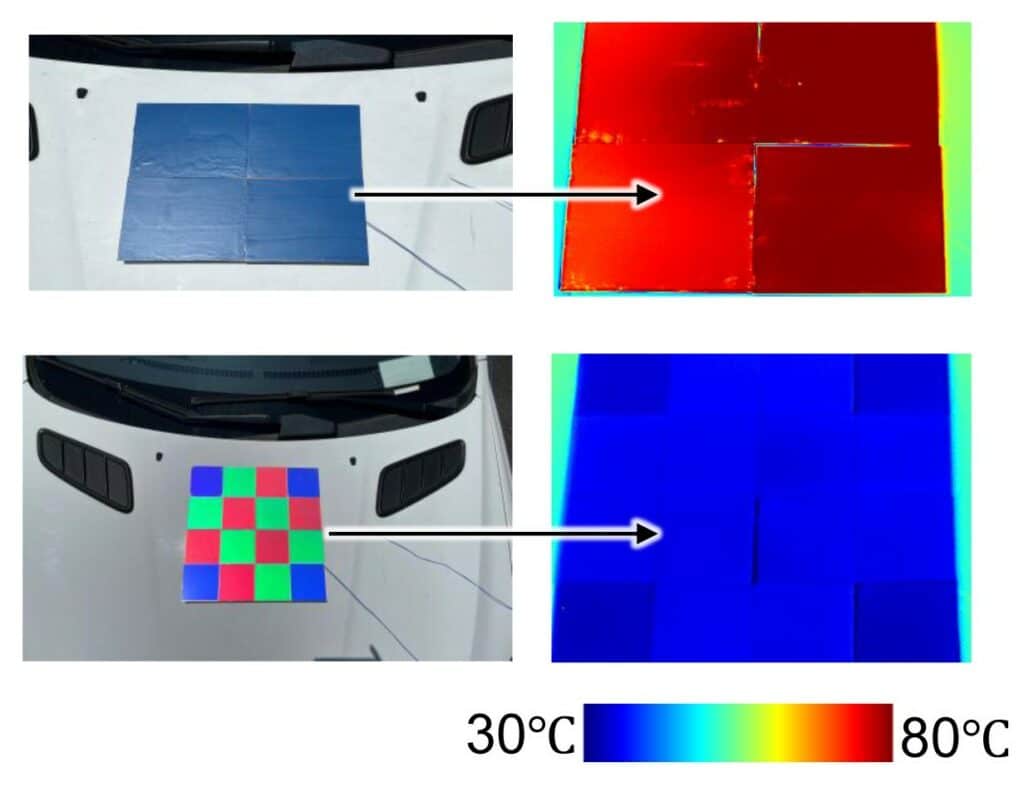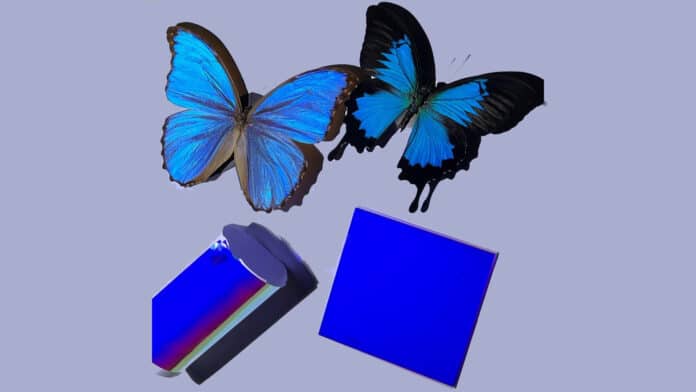Colors are used in various applications, including signal transmission, art, protection, and thermoregulation. Traditional colors are created by regulating two light bands:
Dispersing the desired light in the desired direction that is perceptible by the eyes or cameras and absorbing undesired light unavoidably heats items raising their temperature.
On a hot summer day, white clothing feels cooler than other colors because it reflects sunlight rather than soaks up. Different colors, such as blue or black, will heat up as they absorb. They have looked to butterfly wings for inspiration to avoid this heating effect in colorful cooling films.
Researchers at China’s Shenzhen University have created a cooling film that can be placed outside buildings, cars, and equipment to reduce the energy required for cooling while retaining vibrant color qualities.

Research team leader Wanlin Wang from Shenzhen University in China said, “In buildings, large amounts of energy are used for cooling and ventilation, and running the air conditioner in electric cars can reduce the driving range by more than half. Our cooling films could help advance energy sustainability and carbon neutrality.”
The films, which do not absorb light, might be placed outside buildings, cars, and equipment to save energy while maintaining vibrant color qualities. The researchers, led by Wanlin Wang, discovered that the films reduce the temperature of colored items to roughly two °C below the ambient temperature and that the blue version of the films was approximately 26°C cooler than typical blue automobile paint when left outside all day. This equals an annual energy savings of roughly 1377 MJ/m2.
He said, “With our new films, excellent cooling performance can be achieved, no matter the desired color, saturation, or brightness. They could even be used on textiles to create clothes of any color comfortable in hot temperatures.”
Blue car paint appears blue because it absorbs and reflects blue light. The high amount of light absorbed heats the automobile. Morpho butterflies, on the other hand, get their highly intense blue color from the nanostructure of their wings.
The cooling nanofilms are designed to resemble the nanostructure of butterfly wings, resulting in brilliant colors that do not absorb light like regular paint. The researchers sandwiched a disordered material between two titanium and aluminum dioxide layers. Then, they placed this structure over a silver layer reflecting all light, preventing solar radiation absorption and the resulting heating. The film’s color is determined by how the parts of its multilayered structure reflect light.

The researchers tested the new technique by making blue, yellow, and colorless films and displaying them outside Shenzhen University from 9 a.m. to 4 p.m. in winter and summer. The researchers discovered that the cooling films were more than 15 °C cooler than the surfaces placed on in the winter and more than 35 °C cooler than the surfaces placed in the summer by using thermocouple sensors and infrared cameras to measure temperature.
The researcher said, “Thanks to the layered structure we developed, we could extend the passive cooling method from colorless objects to colorful ones while preserving color performance. In other words, our blue film looks blue across many viewing angles and doesn’t heat up because it reflects all the light. In addition, high saturation and brightness can be achieved by optimizing the structure.”
The researchers point out that substituting the silver film with an aluminum layer reduces the cost of the films and makes them more scalable for production methods like electron beam evaporation and magnetron sputtering. After showing the films’ cooling and color performance, the researchers try to find the truth and improve other aspects, such as mechanical and chemical robustness.
The National Natural Science Foundation of China funded the study.
Journal Reference:
- Wanlin Wang, Hongyun Xing, etal. Cooling colors below ambient temperature. Optica. DOI: 10.1364/OPTICA.487561
